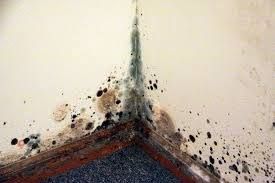
Mold And Your Health
Jessica Gordon
Water has crept into your home against your will. Maybe, there was a flood, sewage backup or even just a tiny leak that has gone undetected for some time now. The water can come from a clean source or a contaminated source. However, both pose a threat.
Clean water may not initially be dangerous; but can quickly become a breeding ground for bacteria and mold. Mold can begin to grow in as soon as 48 hours. All it needs is moisture, food and optimal temperature. Standing water in your home provides these necessities.
If you see or smell mold a health risk may be present. No matter what type of mold is present, it should be removed immediately. Proper removal and elimination is key to prevention. Many spores can remain dormant for long periods of time under dry conditions; However, much like a Gremlin can begin to reproduce when coming into contact with water or moisture. Keep in mind that spores live on surfaces, but are spread through the air. Proper containment is a must. Without it contamination of other areas is inevitable.
Some of the most common symptoms of mold exposure include nasal stuffiness, headache, throat irritation, coughing, wheezing, minor skin irritations and eye irritations. Some studies have even linked exposure to stachybotrys chartarum with memory loss or lethargy. Not everyone that has been exposed will experience symptoms. Children, the elderly or individuals with a compromised immune system are at a much higher risk.
Common indoor mold species include: Aspergillus, Acremonium, Cladosporum, Dreschslera, Epicoccum, Penicillium, Stachybotrys and Trichoderma.
There are many suggested ways to remove these culprits from your home. I recommend calling in professionals with the proper equipment. Never take your health and safety for granted.

